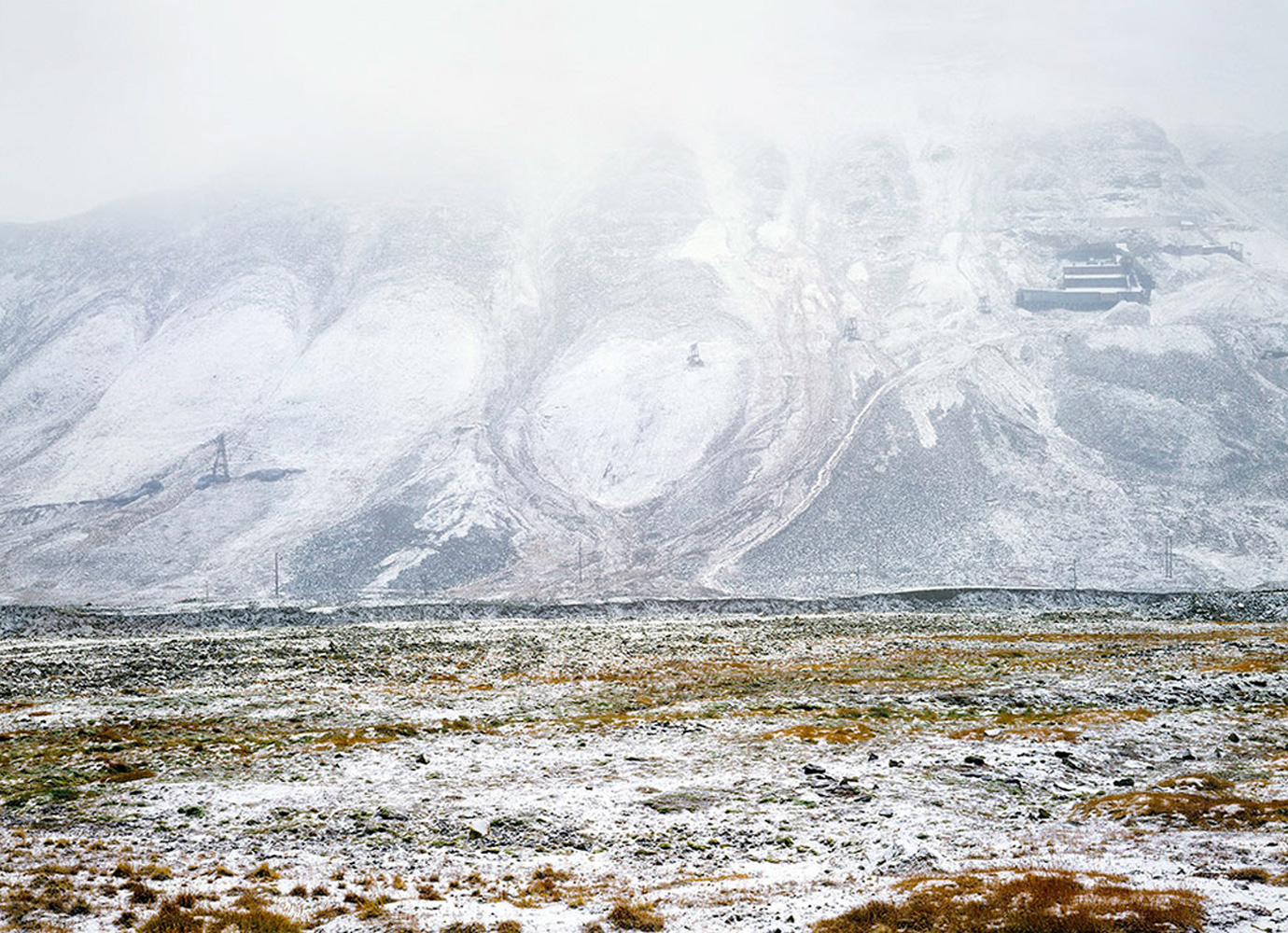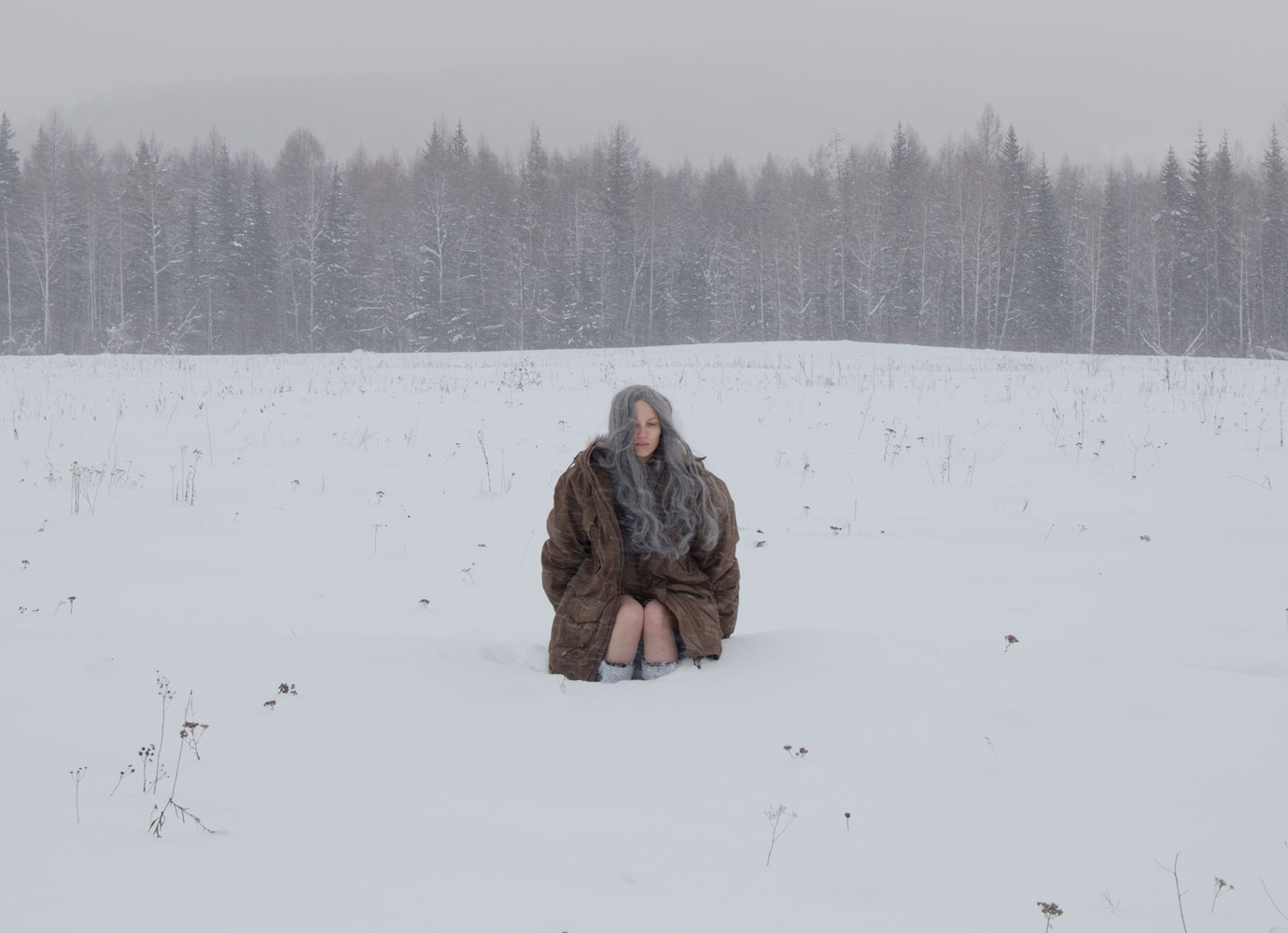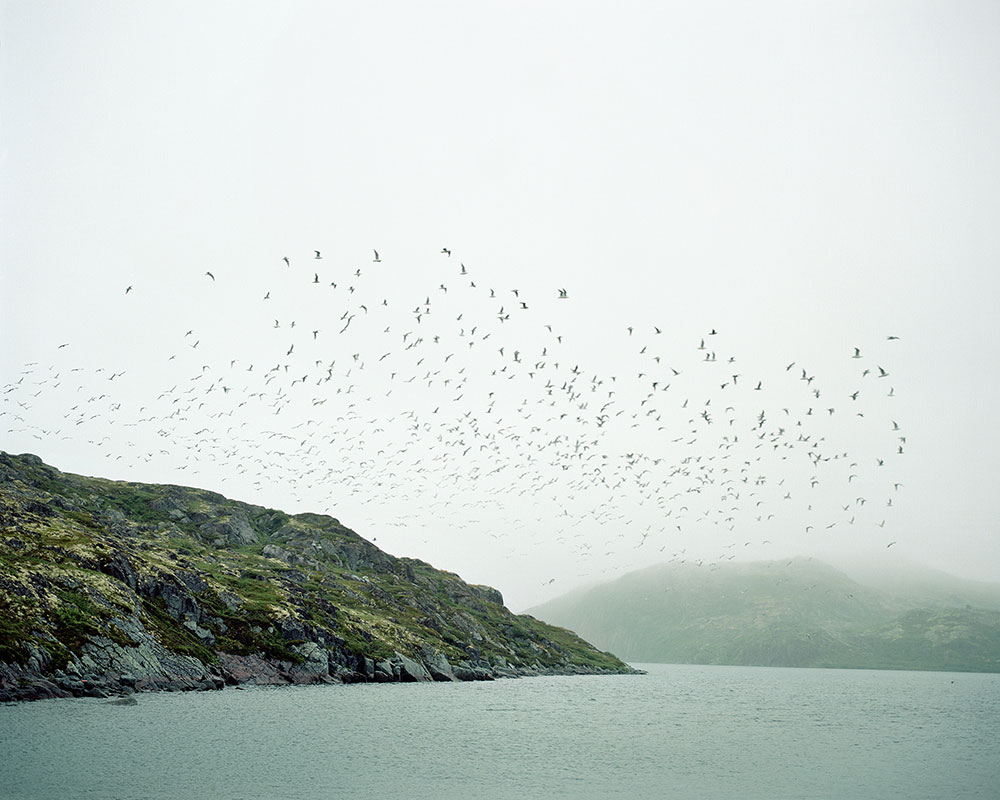Behind photographer Evgenia Arbugaeva’s dreamlike vision of the Russian Arctic
Born in Tiksi, a small and remote town on the northern coast of Siberia, for the last decade photographer Evgenia Arbugaeva has been chronicling the lives of the inhabitants of Russia’s Arctic regions. Her whimsical images of isolated meteorological stations and derelict towns reignite our childlike imagination — but how much do they obscure the realities of the climate crisis?
In 2013, photographer Evgenia Arbugaeva travelled to 22 remote meteorological stations across the Russian Arctic on an icebreaker ship. One of her stops was at Khodovarikha, on the Perchora Sea, where Slava, 63 at the time, worked as the lone stationmaster. He was still using morse code to communicate his measurements of the wind, the air, and the sea, when others had transitioned to automated technology. Arbugaeva was fascinated by this man who came to the Arctic at a time when polar exploration was considered as romantic and as daring as travelling to space. She asked him how he lived there, all alone at the edge of the world. Didn’t he get bored? He answered, “Every day is not the same here. Look, today you saw the bright Aurora Borealis, and a very rare phenomenon on thin ice covering the sea. Wasn’t it great to see the stars tonight, after they were hiding from us behind the clouds for over a week?” So reads the wall text at Arbugaeva’s first major UK exhibition at The Photographers’ Gallery in London.
From the series Weather Man (2013)
Photographing the Russian Arctic is a way for her to stay connected with the landscape of her childhood
The Arctic is often depicted as a harsh environment to be fought against and tamed. For Arbugaeva, Slava illustrated a gentler way of seeing the region, delighting in the subtle variations of the light and the sea. Weather Man became the first series in her wider project to photograph the inhabitants of the Russian Arctic, chronicling their everyday lives. She wanted to capture the region’s different moods: how it can be harsh and unforgiving, but also joyful and beautiful.
Four of these series are on view at Arbugaeva’s exhibition at The Photographers’ Gallery. Besides Weather Man, the three other series were made on a National Geographic Fellowship between 2018 and 2019. One also focuses on a young couple of meteorologists/lighthouse keepers, who live isolated on the Kanin Nos peninsula. The other is about the ghost town, Dikson, which was once the capital of the Arctic under the Soviet Union. The third looks at the indigenous Chukchi village of Enurmino in the Chukotka region, on Russia’s easternmost coast. Together, these series span the entire Russian Arctic. Arbugaeva’s photographs, however, are not purely documentary: she imbues each image with the otherworldly atmosphere of a myth, a fable, or a dream.
From the series Dikson
The hardest part of photographing the Arctic for Arbugaeva is not the climate but the travel logistics. The places she shoots are so isolated that it can take weeks to get there, sometimes even longer depending on the weather. She plans far in advance. As life in the region is repetitive, it is easy to anticipate what will happen. The same event will take place at different times of the day, at different times of the year. The trick is to know from the get-go what image you want, and then waiting for the perfect light and the perfect setting. So when Arbugaeva traveled to the ghost town Dikson, she went in the dead of winter, when she knew she had higher chances of encountering northern lights. And after two patient weeks, it finally happened: all of Dikson and its abandoned artifacts suddenly became cloaked in fluorescent green, like a hallucination. Framing the everyday in the extraordinary is a common tactic in Arbugaeva’s photography. Everything is real and unstaged, yet it looks otherworldly.
Arbugaeva’s photographs have been criticised for looking staged — like a movie set
Arbugaeva grew up in the Russian Arctic hearing about the places she went on to photograph professionally. She was born in Tiksi, which is close to the Léna Delta and 4,300 km away from Moscow. Like many towns in the region, Tiksi was built during the USSR’s Arctic expansion and served both as a port and a military base. As a child, Arbugaeva played in the tundra. She describes that landscape, composed of low shrubs, lichen, grasses, and moss, as deceptively empty, until you start looking closely and entire galaxies appear. Her childhood was idyllic, but when the USSR fell in 1991, Arbugaeva’s family was forced to relocate. Tiksi and other towns built during the Soviet’s dreams of Arctic expansion lost almost 80 per cent of their population. The Arbugaevas moved inland to Yakutsk, Siberia’s capital. She went on to study art management in Moscow and then relocated to New York, where she took documentary photography classes at the International Center of Photography, graduating in 2009. She started photographing the Arctic almost immediately, returning to Tiksi in 2010 to follow a local girl named Tanya, whose adventurous spirit reminded Arbugaeva of herself at a similar age.
From the series Weather Man (2013)
Arbugaeva is unapologetic of the nostalgia in her work. In a video interview for The Photographers’ Gallery, she says photographing the Russian Arctic is a way for her to stay connected with the landscape of her childhood. Although she currently lives in London, she returns every year for several months at a time and claims the landscape has a cleansing effect on her. In the Arctic winter, the sun doesn’t rise above the horizon. In the summer, it doesn’t set. During an artist talk at The Photographers’ Gallery on 9 December 2020, Arbugaeva revealed that this endless night and sleepless summer affects your mind. Your eyes become hypersensitive to the faintest hint of colour and the slightest shift in light. While the city overwhelms the mind with flashing lights and advertisements, the Arctic landscape is “like a piece of white paper”. “It’s hard to photograph there,” Arbugaeva explained during a talk for The Photographers’ Gallery, “because it’s not picturesque, it’s not juicy. And that’s why you need to have your own interpretation. It’s so plain.” If the city fills her mind, in the Arctic, it’s her imagination that fills the landscape.
There’s been a number of non-fiction books that explore the space the Arctic holds in the cultural imagination, from Barry Lopez’s Arctic Dreams to Francis Spufford’s I May Be Some Time and Joanna Kavenna’s The Ice Museum. But documentary photographers tend to anchor their projects in the region in realism. Yuri Kozyrev and Kadir van Lohuizen’s Arctic: New Frontier, for example, attempts to illustrate how climate change is reshaping the region, from military expansion to oil exploitation, while Elena Chernyshova’s series Under the Gold Dome follows daily life on the isolated Kupol gold mine in Chukotka. Both projects focus on regional or communal dynamics, rather than individual stories. Their viewpoint is sober and at a remove; their palette composed of greys and whites, with touches of bright color, like the yellow hat of a construction worker. The images illustrate how people are making full use of the Arctic and its resources. They’re firmly anchored in the present.
From the series Kanin Nos
Meanwhile, Arbugeava’s dreamlike depictions of everyday life show us a gentler side of the Arctic, one not defined by exploration, harsh climate, or a fight against the elements. She pays close attention to quiet moments and domestic settings: we see Evgenia reading by a heater, and Slava working late at night by the light of a lamp. Even the most dramatic image in the exhibition, of Chukchi men hunting a walrus, feels hushed and serene. The walrus looks at us with a bulging eye, and the men on the boat look at the walrus. Chukchis traditionally believe animals can understand us, even when we speak to them in our mind. So while the image does illustrate man dominating nature, it also shows hunters asking the walrus for forgiveness.
Arbugaeva’s photographs have been criticised for looking staged — like a movie set. They have a stillness to them, and you’d be hard-pressed to find modern technology in her images. Slava’s meteorological equipment is quickly becoming obsolete, and his wallpaper looks straight out of the 80s. The series Kanin Nos also omits that Evgenia speaks with her mother through Whatsapp, as the lighthouse, for all its physical isolation, still has a sliver of internet. Looking at these images, you might think the Russian Arctic hasn’t changed since Arbugaeva left in 1991. When someone confronted her about this criticism of her work during her talk at the Photographer’s Gallery — that it looks unreal, and detached from current times — she simply replied, “I cannot pretend I’m someone else. I’m just the way I am, and this is how I see”.
From the series Weather Man (2013)
The dreams and fantasies depicted in Arbugaeva’s images sometimes collide against the realities of the region. Over the past 30 years, the Arctic has warmed at almost twice the rate of the rest of the world: the area sea ice covers at its minimum, in September, has reduced by half since 1981. This loss of ice is directly impacting the landscape, as well as the animals and the humans that inhabit it. The indigenous Chukchi she photographed in Enurmino maintain a diet composed almost exclusively of whale and walrus meat, yet the behavioral patterns of these animals are changing due to climate change. One image in the exhibition captures this. It shows a herd of walruses just outside the door of the house the photographer was staying in. Normally, they’d be out at sea, but the lack of floating sea ice forced 100,000 mammals onto land, where many died of suffocation because of crowding.
The other images in the exhibition don’t focus on climate change directly, and that is fine: artists don’t always need to address current socio-political issues. The problem is that many viewers will still approach these images of frozen Arctic landscapes through climate change anxiety, as it cloaks our perception of the region, for better or worse. This can create a strange situation where the nostalgia depicted in Arbugaeva’s photographs is deepened in a way that was not intended by the photographer, as it melds with climate grief. How will the Chukchi adapt their diet to these shifting wildlife migrations? And what will happen to the meteorologists she photographs, who speak so eloquently of their love for the Arctic landscape? Are they all fated to abandon their homes, leaving them to become ghost towns like Dikson? Arbugaeva’s dreamlike depictions of vanishing landscapes and disappearing ways of life are set for a rude awakening.
Evgenia Arbugaeva: Hyperborea — Stories from the Russian Arctic at The Photographers’ Gallery is temporarily closed to the public. Visitors should check tpg.org.uk for the latest opening information.


